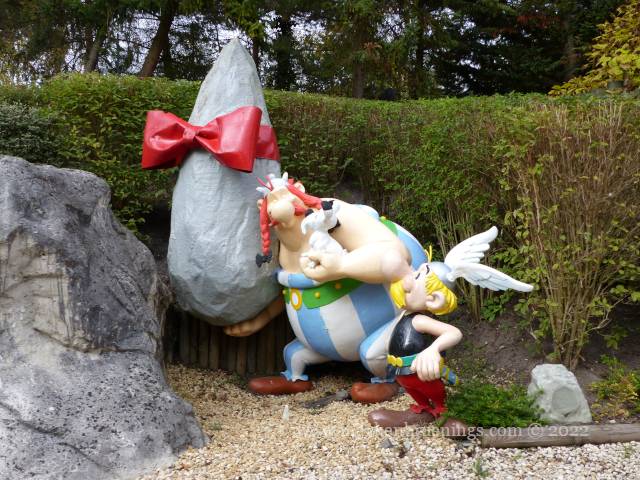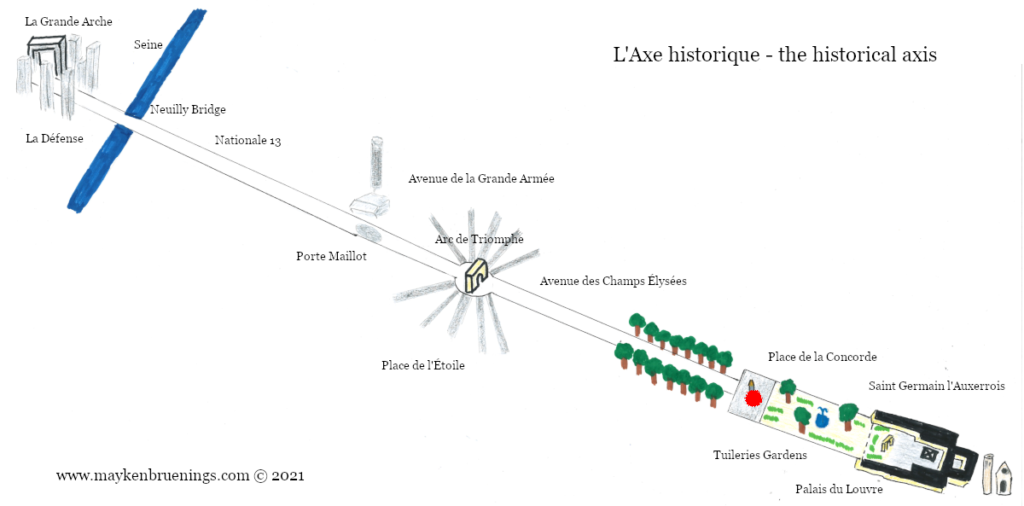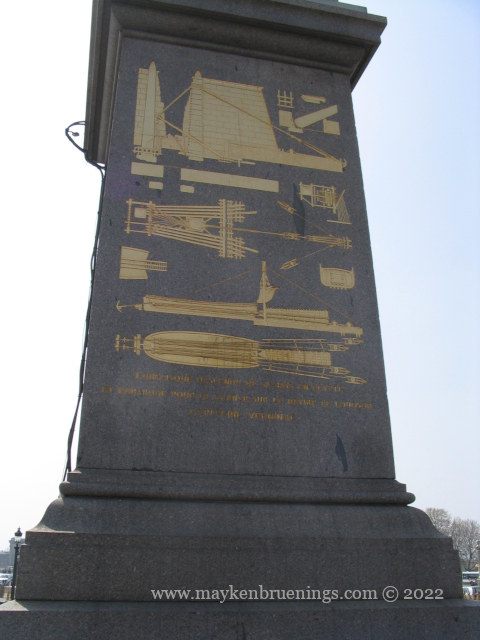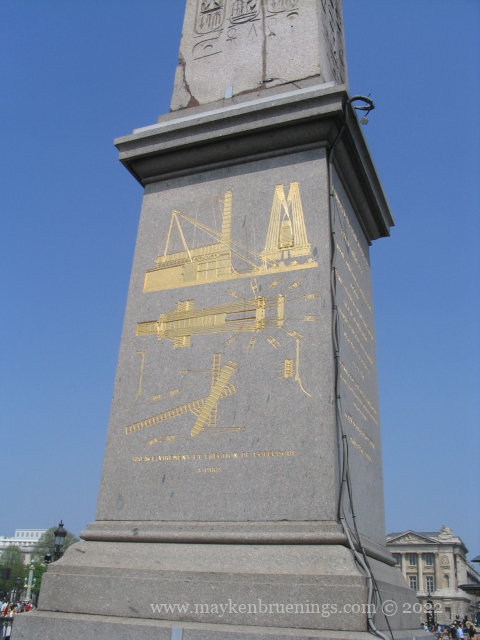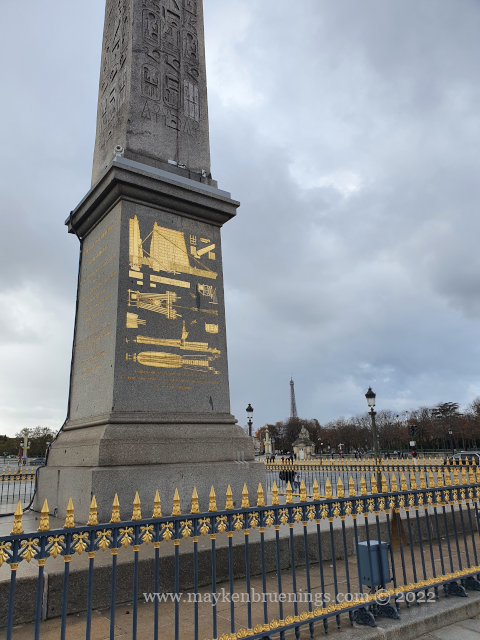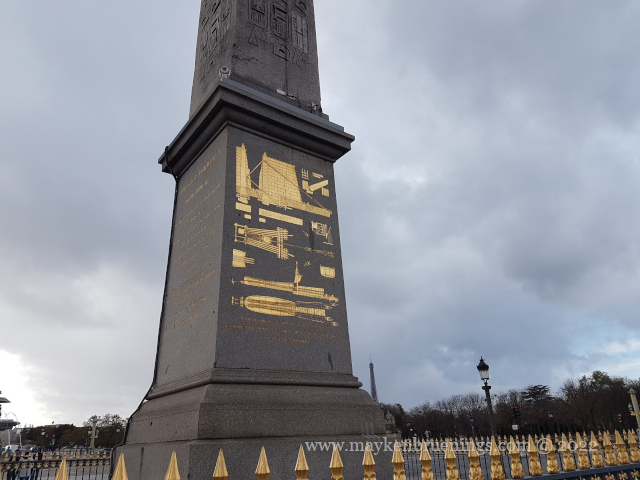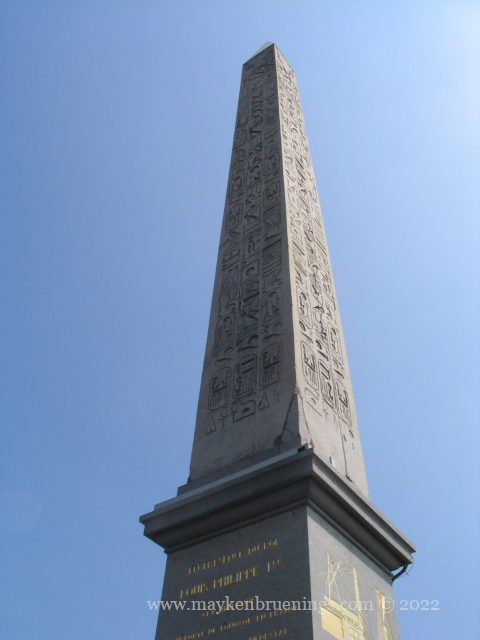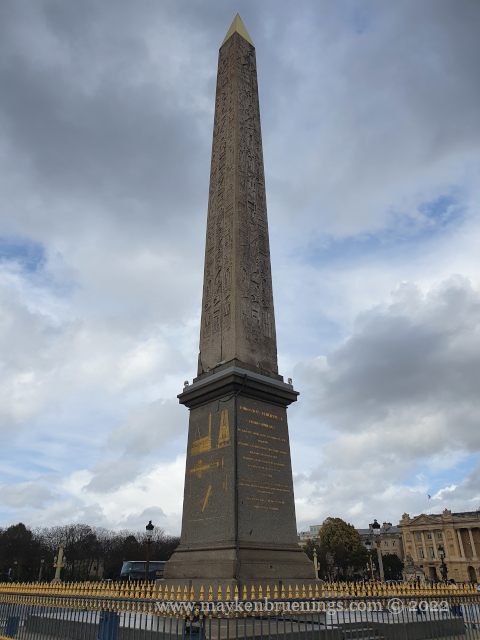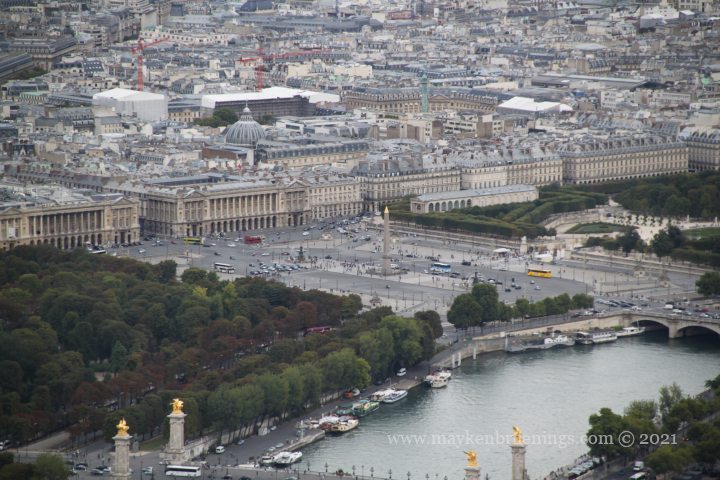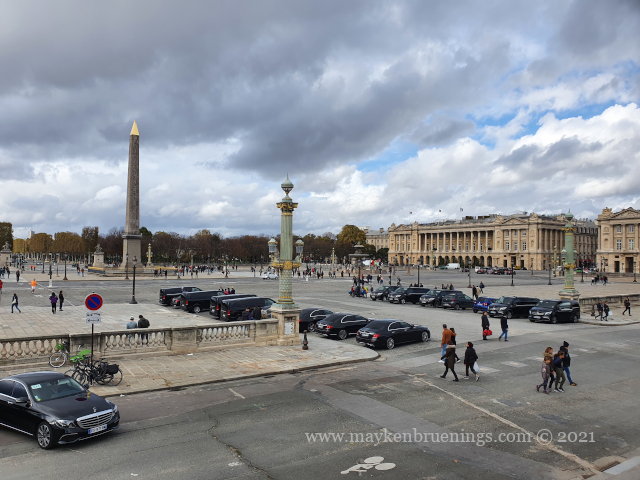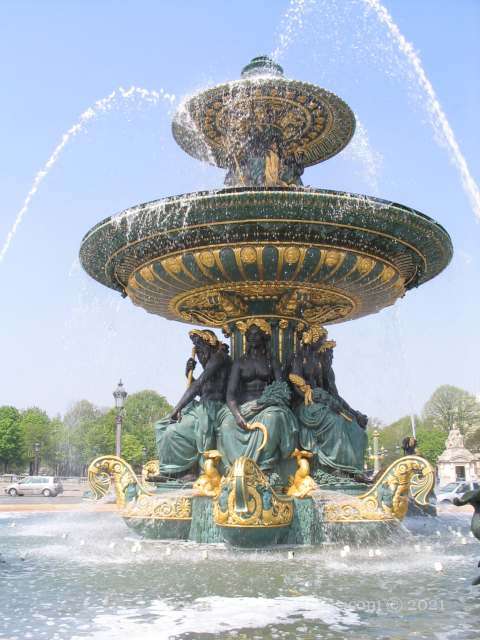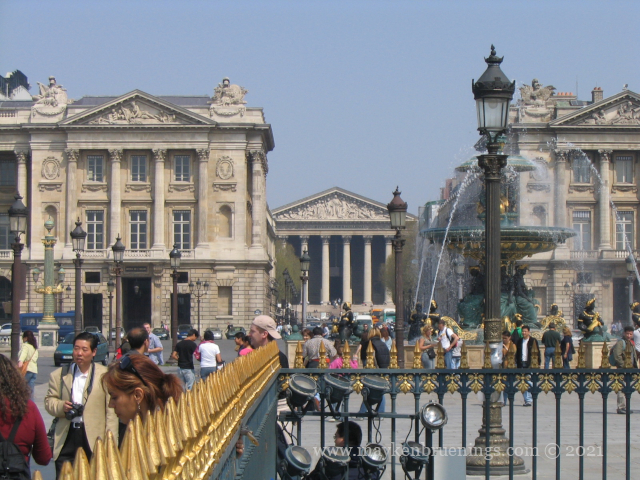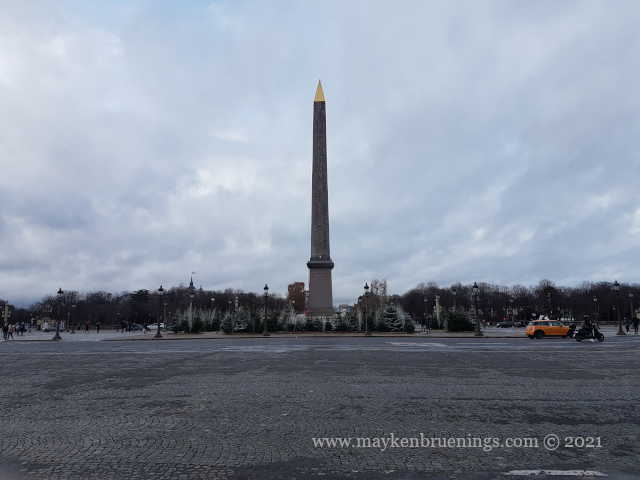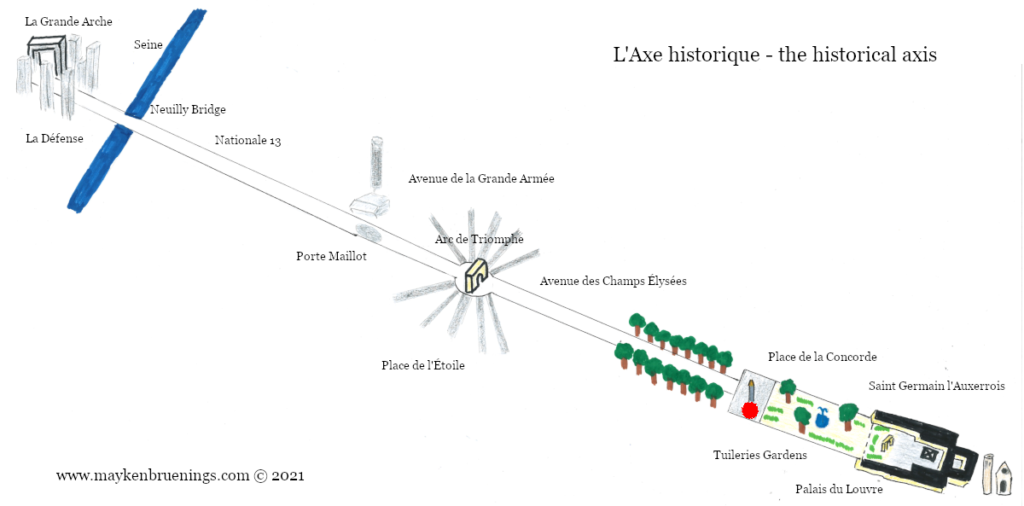Following an equestrian statue of Louis XV, a statue of liberty and a statue of Louis XVI, the Luxor obelisk has stood at the center of the Place de la Concorde since the 1830s.
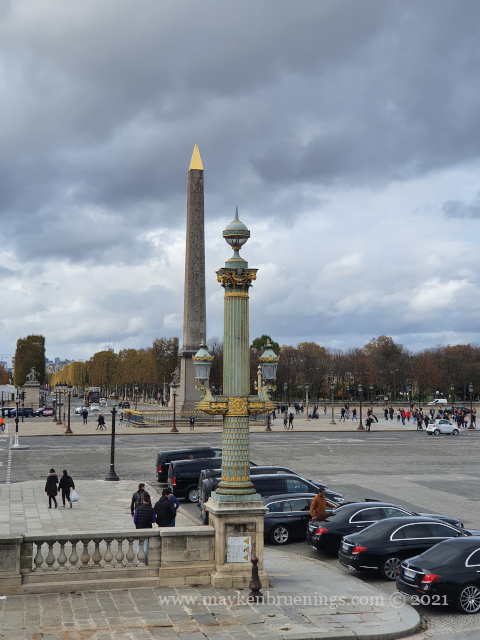
Actually, there were two obelisks given to France by Egypt. Jean-François Champollion, the French scholar who deciphered the hieroglyphs, chose which would be transported to France first.
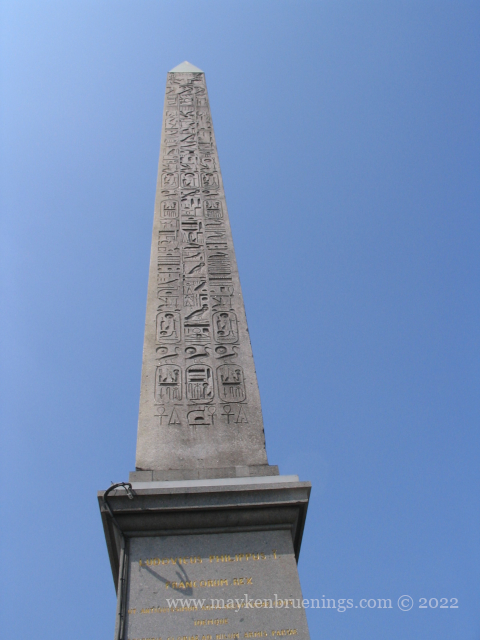
A ship had to be built specifically for its transport as it had to be able to navigate the Nile, the Mediterranean, the Atlantic Ocean, the Channel and the Seine, all with the 23m-long 230 ton obelisk aboard. The journey ended up taking almost two years.
Details of the complex machinery needed to transport and erect it were added to the pedestal in 1839.
Today’s gold-leaf pyramid cap was added in 1998.
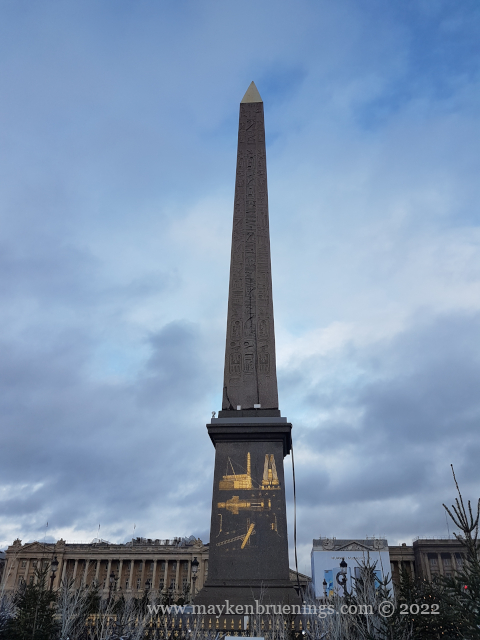
In 1981, President François Mitterrand officially renounced possession of the second obelisk, restoring it to Egypt, where it can still be seen at the Luxor Temple.
